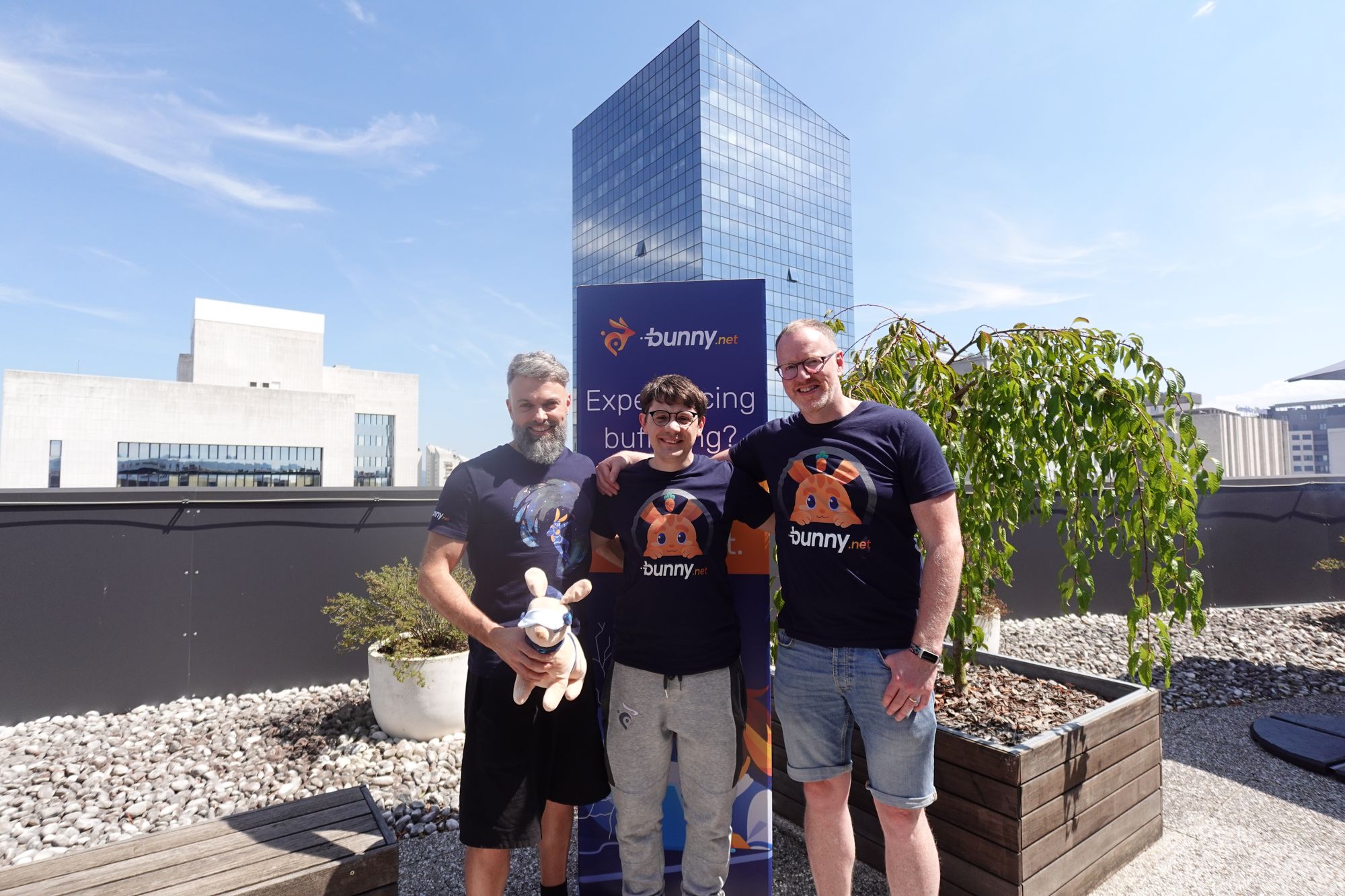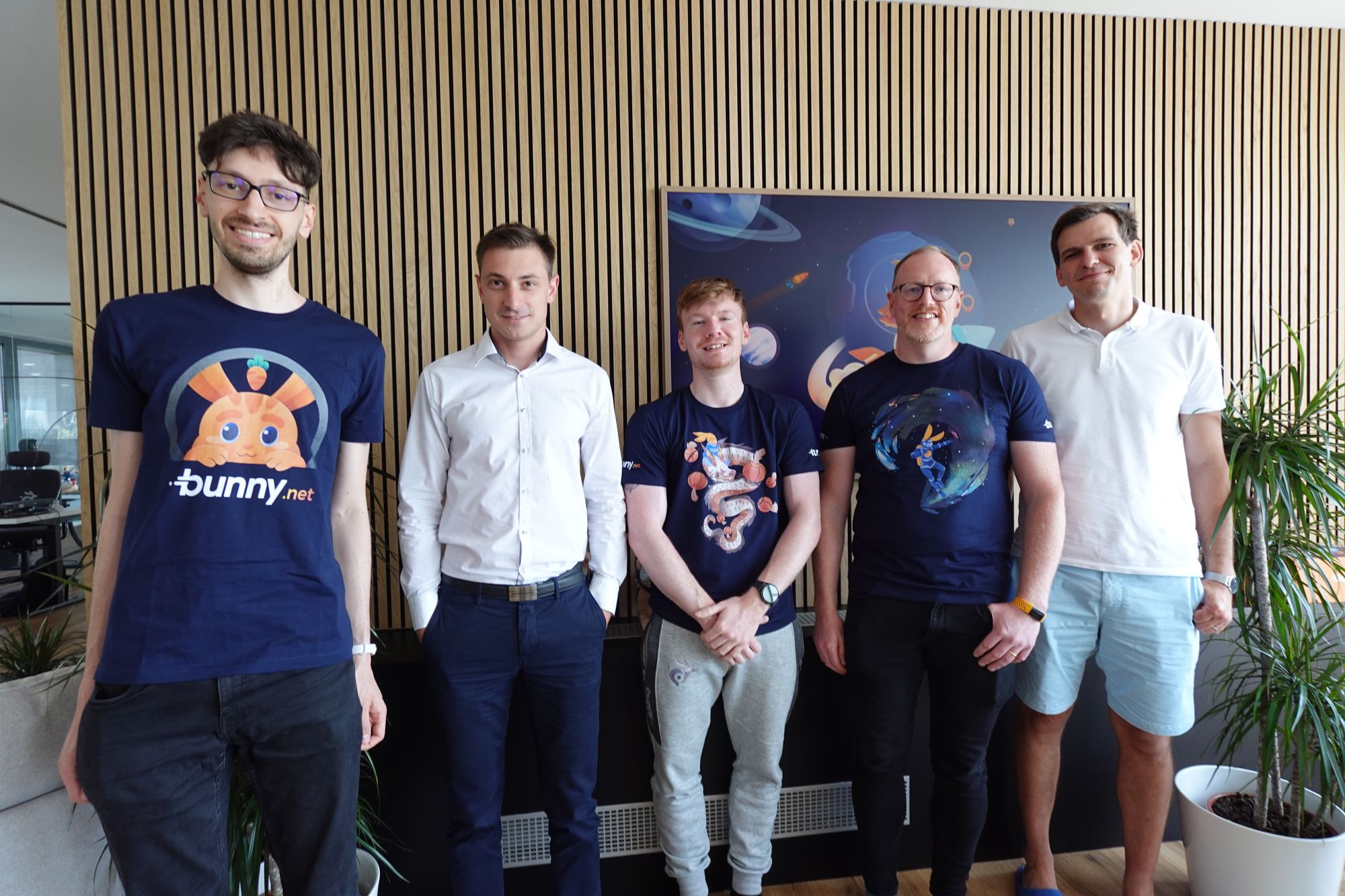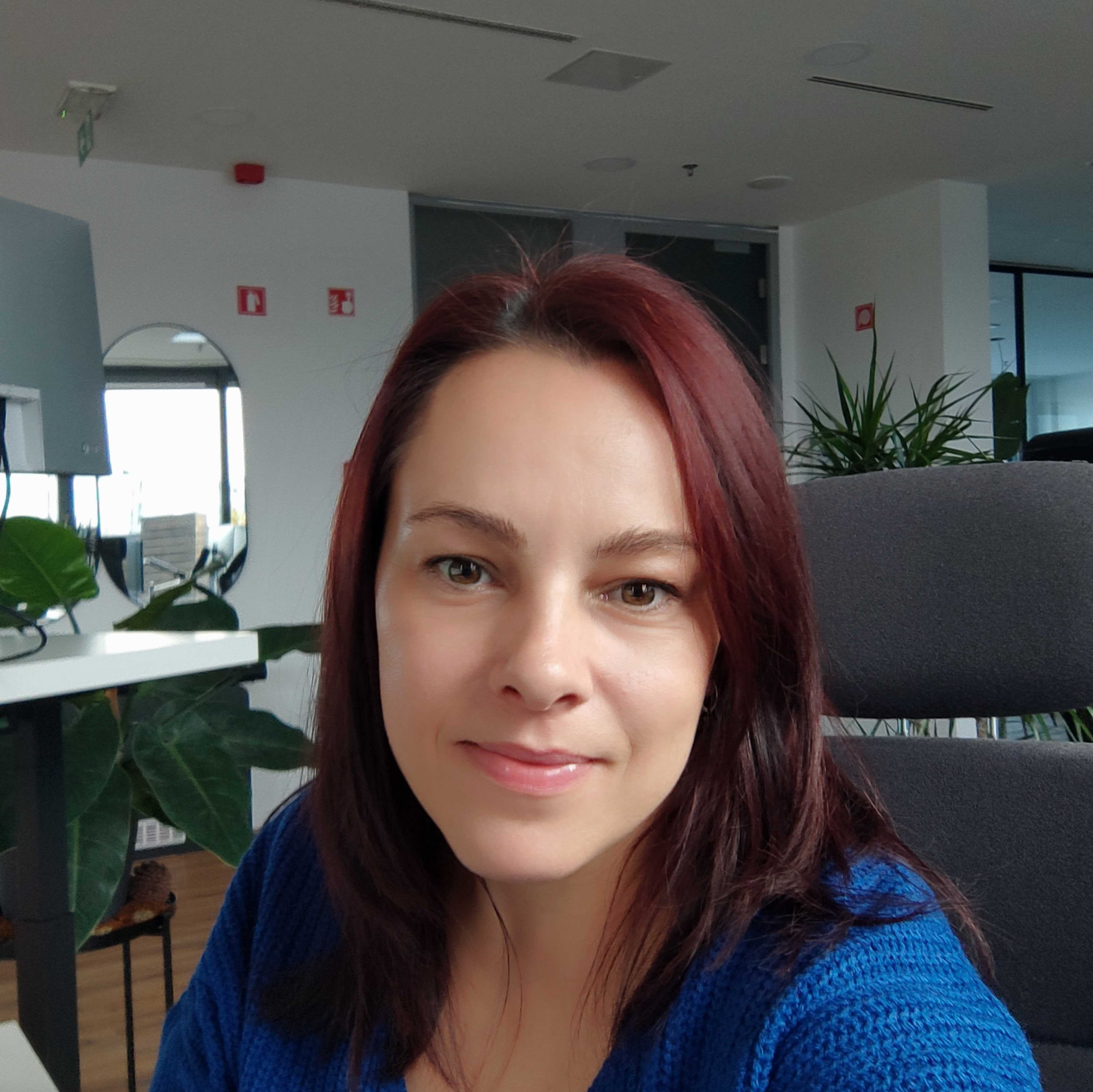Meet Kevin McGhee, Vice President of Engineering at bunny.net. With vast experience from industry giants like McAfee and Mimecast, Kevin truly knows how to scale engineering teams and foster innovation. His path from leading technical teams at Intel Security to his position at bunny.net is a strong testament to his commitment to pushing limits and nurturing growth in high-paced environments.
Kevin opens up about his own career journey, what attracted him to bunny.net, and how he's been building a high-performing team in a remote-first world. Additionally, he discusses his experiences with cutting-edge technology, balancing life and work, and provides his vision for the future of bunny.net as the company continues to develop. It is a story of evolution propelled by Kevin's passion for technology and his commitment to helping companies and people reach their full potential.
Q: Can you quickly introduce yourself? What is your position at bunny.net, and how did you find out about the company?
– My name is Kevin McGhee, and I'm currently the VP of Engineering at bunny.net. I discovered bunny.net through LinkedIn, which initially piqued my interest. As I looked deeper into the company's products and mission, I became genuinely excited—I felt there was a strong fit between the innovative edge of the technology and my expertise in scaling and optimizing engineering teams. After three years at Nominet, I felt ready for a new challenge. Joining bunny.net seemed like a perfect step forward, aligning my career goals with a company that is highly innovative and has exciting prospects ahead.
Q: After spending 9 years working at the giant McAfee and 5 years at Mimecast, what drew you to hop over to a startup company like bunny.net?
– After graduating from university, I began my career at a startup called Brightmail. I have fond memories of my time working there and loved the fast-paced, close-knit team. After Symantec acquired Brightmail, I found myself working in much larger organizations. After Symantec, I moved over to McAfee, which was subsequently acquired by Intel. These experiences were great; they allowed me to understand operations at scale and to learn from many talented engineers and managers.
I then joined Mimecast when it was still relatively small, about 500 employees, and pre-IPO. Being part of Mimecast during its IPO and subsequent growth phase was an amazing experience and taught me a lot about successfully scaling engineering teams and architectures.
With this range of experience, I felt ready to return to the startup world, where I could apply my skills to help a smaller company grow. bunny.net was the right opportunity at the right time.
Q: Your career is really impressive; can you walk us through your journey from being a Technical Lead at Intel Security to VP of Engineering at Nominet Cyber? How have these roles prepared you for your current position?
– When I first stepped up into a Technical Lead position at McAfee/Intel Security, the role was still more on the technical side of things, but I learned a lot about managing complex projects and collaborating with people across teams. Eventually, I found myself managing a team, and I really loved being able to have a bigger impact by taking on bigger, more complex projects.
For me, there’s nothing more rewarding than taking a nugget of an idea all the way through to a working system that is useful and impactful in the real world. That’s the beauty of software engineering! Being able to work on bigger ideas and innovations led me to grow the size of my team, and I eventually found myself in a Senior Manager role at Mimecast, overseeing multiple teams.
I then had the great opportunity to move over to Nominet to take on my first VP of Engineering role, where my responsibilities broadened to include strategic oversight across the Nominet Cyber engineering team. It was a significant step up, but I felt I was ready for the challenge. Each role has built on the last, giving me a broad perspective and the experience to perform all the varied aspects of the role.

Q: During your time at Mimecast, you led the development of analytics and machine learning capabilities. Could you share a specific project you're particularly proud of and the impact it had on the business?
– At Mimecast, I quickly identified a significant opportunity to leverage underutilized data, leading to the inception of a system I named Jarvis—short for "Just a Rather Very Intelligent System." The name was inspired by the AI computer from Iron Man. It was a bit of fun naming it that, but it really set a creative and ambitious tone for the team.
Before forming the team, I began developing the initial version of what would become a comprehensive data platform. This platform was designed to aggregate data from thousands of servers in near real-time, integrating this information across numerous products. Once the team was in place, formed of some incredibly talented engineers, we expanded our focus to include artificial intelligence.
One of the milestones I'm most proud of from this period was our work in deep learning, which was cutting-edge at the time. Our efforts not only replaced more costly services but also laid the groundwork for further innovations in AI at Mimecast.
Q: bunny.net is a remote-first company. What strategies would you use for building and maintaining a high-performing engineering team in remote conditions? Do you have any tips or tricks?
– Throughout my career, I’ve always had to work with colleagues and team members who were spread around the globe, but in the post-COVID world, things have changed, and the ability to be remote-first is now a great opportunity for companies like bunny.net to access a global talent pool. I’ve found that it’s important to meet people in person occasionally to build human connections. It doesn’t have to be every week or even every month, but there is still something that seems to click in person that you don’t get from Zoom calls. It’s really great to see that bunny.net has an annual team-building event for the global team and opportunities for teams to meet in person where needed.
The most important thing when working remotely is trust. The vast majority of people want to and will do the right thing and are super happy with the extra flexibility that working from home gives them. There will always be outliers, and when they happen, we need to make sure that we’re candid about it.
Communication is key in a remote-first world. We need to make sure that the right lines of communication are open and that we have the structure in place to make it seamless. A daily stand-up, regular 1-on-1s, Slack channels, opportunities for cross-team and cross-department collaboration, clear vision and goals, and healthy feedback and recognition all contribute to good lines of communication.
Q: You have extensive experience with technologies like Apache Kafka, Hadoop, and AWS. How do you stay updated with technological advancements and decide which ones to implement within your team?
– Books have always been key to going deep on particular topics alongside online research. I follow quite a few blogs for a regular stream of what’s happening in the tech landscape and have attended quite a few conferences and meetups, which can be enlightening. I also learn a lot from all of the impressively intelligent Engineers in the team around me. Having discussions with the team about technology and the things we need to do, I learn a lot just in my day-to-day role.
Q: Looking back at your career, what would you consider your highest achievement and your most significant learning experience?
– When I joined Mimecast I was given the freedom to do a huge amount of innovation. I started building a hugely scalable data platform on my own and later, with the team, moved into developing advanced AI models and a platform to deploy them and do inference at scale. I managed to build a really stellar high-performing team around the vision, which was really fulfilling and ultimately gave me the confidence to go into a wider leadership role in Engineering, so I think that was an inflection point and a great achievement. That was also a significant learning experience!

Q: Balancing a demanding career with a personal life can be challenging. How do you manage to maintain this balance, and have you faced any particular struggles in doing so?
– The role can be time-consuming, but I always try to make time for family and life in general. You have to be strict and not let it completely take over. There will be days when you have to work late or during weekends or have to log in and do some tasks when you have some free time, but trying to work that around your personal commitments is key. Being a remote-first company, we have flexible working here at bunny.net; if I need to do something during the day with my partner and then work a bit in the evening, it’s all good, so it goes both ways. That gives people the real benefit of balancing work and life together.
Q: Looking ahead, where do you see bunny.net in the next five years, and how do you envision your role evolving within the company? What goals are you working toward to contribute to the company's long-term success?
– In five years' time, we’ll have scaled up significantly; we’re already on that trajectory. Ideally, we’ll have IPO’d by then, which would lead to a further acceleration of growth. For me, it’s all about setting us up for success, laying the foundations now so we can scale. As we go from startup to scale-up, organization, different processes, and structures are needed. In my experience, if you get the team structure and architecture right early, it will save a lot of painful technical debt and re-architecture later. So that’s what I’ve started to work on with the team. We need to become a well-oiled machine so we can deliver lots of innovative new products while growing the size of the organization. One of the most important things is to maintain the culture as we grow.
Q: How do you mentor others? Could you share an example of how you helped someone on your team achieve a significant professional growth milestone?
– It’s about talking to people and understanding where they are in their personal journey and what they might need to help them grow. Just giving people some pointers in the right direction can really have a big impact for people who really want to progress. People generally do better if you give them a little advice so they can help themselves. The people here are eager to learn and are willing to put in the work to actually grow and be promoted so that’s great.
I’m quite proud of my track record in taking the best people in my teams and helping them to grow into positions that they really wanted. In my previous role more than half of the Engineering Managers reporting into me were people that I promoted. Throughout my career I’ve also given people the opportunity to move from other roles like support or QA into Engineer positions. I’ve seen some really great Engineers come through paths like that.
Q: What motivates you the most in your professional life? How do you maintain your drive and enthusiasm for your work, and how do you inspire your team to share in your motivation?
– For me, taking a nugget of an idea and turning it into something that drives value for the customer or the company is hugely rewarding. When I started playing around with coding at a young age on an old MS-DOS computer (yes, I’m that old) that my uncle gave to me, it really fascinated me. That motivated me to study and go for a career in technology. I’m still fascinated every day with the advancements we are seeing. Just look at the past few years with LLMs and AI in general. It still amazes me and drives me. I’m a technologist, and I love it and that’s what I really love being around, working with, and getting those ideas and innovations out there, seeing customers use and value them, and ultimately helping the company grow.
I try to motivate the team by letting them understand the impact they’re having and celebrating their wins and the team’s successes. It’s very easy during the daily grind to forget that we are actually delivering quite a lot over time so it’s important to recognise and reward people when they really have made an impact.

Q: How do you adapt to different corporate cultures, and what elements of a company’s culture are most important to you?
– Every company I’ve worked in has been pretty different. An important part is choosing the right company during the interview process and making sure that you understand the culture that you’ll be part of to make sure it aligns with your values. Once you’re part of the team, especially in leadership positions, it’s really important to understand the mission and values and to align with them, leading by example. You need to be flexible and adapt to the culture that you’re part of, but that’s really easy if your personal values are aligned.
I can’t praise the bunny culture enough; it’s been amazing since I’ve been here. Everyone is so friendly, they want to do the right thing, and they are so engaged and excited about what we’re doing. I’ve experienced that in some other companies as well, but not in all, and I think it’s incredibly important. I believe that culture has to be fostered. There are different tools to do that, such as making sure you have interviews that try to identify the right candidates who fit the culture.
Q: Which bunny.net perk is your favorite?
– I think it is flexible working. However, it’s not something to take advantage of all the time. If you have a doctor’s appointment or family commitment, you can just work your day around it. It’s good for me and the team; it’s good to give people the ability to live their lives around the job and make it more flexible. If things are too rigid, you start losing your capital with people. I think that’s a very important thing, and it impacts the culture as well.
Q: What are the top five items on your personal bucket list? These could be professional aspirations, travel destinations, personal milestones, or any other goals you're eager to achieve.
– Career-wise, to get to the CTO position. I’m currently at the VP of Engineering level, so I’ve got some work to do to get there. It’s something you build up with experience over time. I think that my journey at bunny.net will definitely put me in good stead for that.
I’ve always liked the idea of becoming a founder of a startup. I’ve had discussions with various friends and colleagues in the past but the stars need to align with a killer idea and it being the right time for people’s personal and financial situations for it to work.
Outside of my career, I’d really like to travel to South America. I’ve never been, so I’d really like to explore it a little bit. There’s a lot of Asia I haven't explored yet, too, so it’d be really cool to travel a bit more there.
Maybe one day I’ll run the marathon again. I did it a few years ago, and my aim was four hours, but I finished in four hours and one minute, which annoyed me a little bit, so maybe I’ll have to do it again.
Obviously, a very important one is playing my part in getting bunny.net to IPO!


